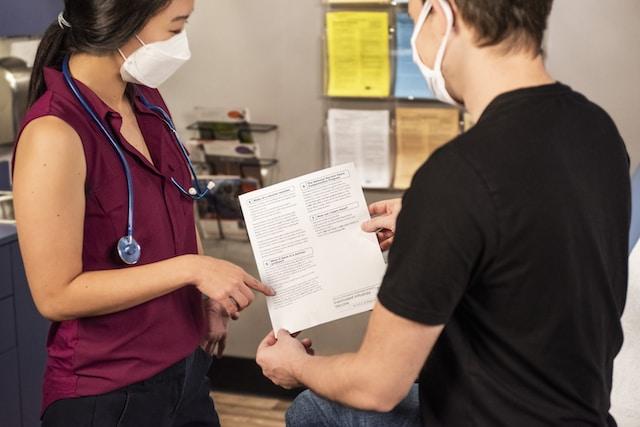The way the healthcare sector functions and applies technology is undergoing a radical change One such change is the rising acceptance of Software as a Service (SaaS) applications. This article explores the rationale for including SaaS apps in the IT stack of healthcare organizations.
Scalability and Flexibility
Healthcare businesses must be able to quickly adjust to new expectations and laws in the constantly changing healthcare sector. SaaS apps provide the flexibility and scalability required to handle these changing demands. Healthcare providers do not have to face major disruptions or bear the heavy financial burden of infrastructure modifications in order to expand their services, take on more patients, or adapt to changing needs. This flexibility makes it possible for healthcare organizations to keep up with the changing requirements of their patient populations, which eventually improves the caliber and accessibility of their offerings.
Cost Efficiency and Predictable Expenses
SaaS applications provide healthcare companies with a more affordable option for software than traditional alternatives. Rather than committing to large upfront costs for software and hardware licensing, healthcare organizations might adopt a subscription-based business model. Because this strategy has known costs, budgeting is made easier, and businesses are able to deploy resources more wisely. Healthcare organizations can better allocate their financial resources—to patient care, and the enhancement of healthcare services—by avoiding substantial capital outlays.
Accessibility and Mobility
The portability and accessibility of SaaS apps are one of its most notable benefits in the healthcare industry. Regardless of where they live, healthcare workers may use these applications to offer treatment and make educated decisions because they can be accessible from any location with an internet connection. When prompt medical advice, information exchange, or visits with distant doctors are critical, this accessibility is quite helpful. SaaS solutions guarantee that vital data and tools are always at the fingertips of healthcare practitioners, regardless of whether they are at a clinic, hospital, or performing telemedicine visits.
Automatic Updates and Maintenance
Software upgrades and maintenance are handled by SaaS providers, relieving healthcare companies of the laborious chore of addressing these components themselves. With this configuration, healthcare practitioners are ensured continuous access to the newest software features, security updates, and improvements without requiring human interaction. Healthcare companies may further simplify their operations, save overhead expenses, and make sure they are not using obsolete software that could present security issues or impede the effective provision of patient care by lowering the administrative load associated with software maintenance.
Enhanced Security and Compliance
SaaS companies prioritize security protocols and compliance credentials, which are essential for the healthcare sector, which is subject to strict data protection laws. SaaS application frequently provide strong encryption techniques, cutting-edge security features, and safe data storage options. These capabilities help healthcare businesses comply with regulations more easily while also protecting private patient data from unwanted access. SaaS solutions let healthcare providers focus more of their time and resources on their core business of providing high-quality healthcare services while maintaining patient data security and integrity. They do this by simplifying security and compliance administration.
Streamlined Collaboration and Communication
For healthcare to be delivered effectively, cooperation and communication are crucial. Integrated collaboration features are a feature of many SaaS products in the healthcare industry, facilitating easy communication between medical experts. Teamwork and collaboration are improved by these capabilities, which include document sharing, video conferencing, and real-time texting. Better patient care is the end outcome of the information and skill sharing. By consulting with experts, exchanging vital patient data, and guaranteeing that every member of the care team agrees, healthcare practitioners may eventually deliver more thorough and patient-focused services.
Data Analytics and Decision Support
SaaS applications have strong data analytics capabilities in the era of data-driven healthcare. With the use of healthcare payer analytics solutions, healthcare institutions may glean insightful information from their data, promoting well-informed choices and ongoing development. Healthcare practitioners may maximize patient care, more efficiently manage resources, and improve the general caliber of their services by using data-driven decision-making to analyze patient data, treatment results, allocation of resources, and other pertinent indicators. These insights help to improve public health efforts, identify best practices, and assist the provision of high-quality healthcare. They also aid in the creation of healthcare legislation. In a time when providing evidence-based healthcare is essential to success, SaaS apps have emerged as priceless resources for healthcare companies seeking to provide the greatest care possible to their patients.
Conclusion
To sum up, SaaS application are becoming indispensable resources for healthcare institutions trying to change with the times. In the provision of top-notch patient care, their scalability, affordability, accessibility, automated updates, security, tools for communication, and data analysis abilities make them priceless assets. SaaS applications for healthcare organizations put them in a better position to take advantage of technology breakthroughs and handle the problems of modern healthcare while concentrating on their main objective: enhancing the well-being and health of their patients.



